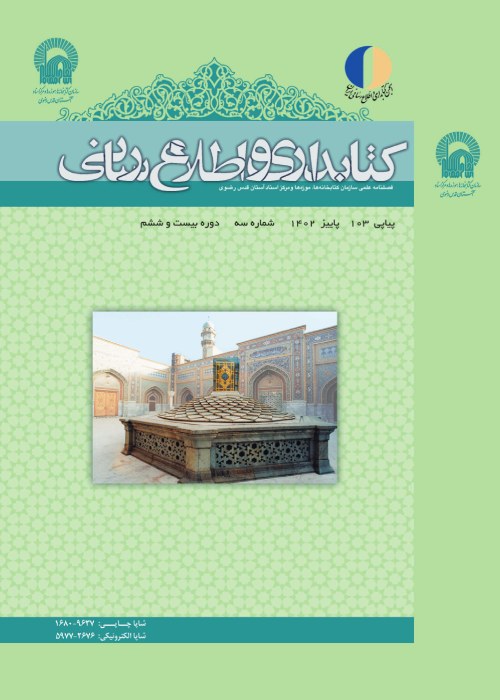Non-book Resources Organizing Using CIDOC Conceptual Reference Model (CIDOC-CRM)
This article aimed to demonstrate the results of a study on the application of the CIDOC Conceptual Reference Model for organization of non-book resources.
The content analysis method with a comparative approach was used. In this line, the UNIMARC Standard, the second edition of the Anglo-American Cataloging Rules, and the CIDOC Conceptual Reference Model were reviewed. 116 works in 17 types of non-book materials found in the National Library and Archives of IR of Iran (NLAI) collection formed the statistical population. A checklist was developed and used as the data collection tool, and Microsoft Visio Software was used to draw the required chart.
As a result of this study, 37 data elements were identified. These elements were entered in the fields of zero to eight blocks of the UNIMARC Standard. The rules of description were also based on the second edition of the Anglo-American Cataloging Rules in eight areas of description and analysis and access point parts. A description was provided based on the CIDOC Model for each data element. Also, 20 entities were selected from the CIDOC model, which were interlinked through 23 properties as was required. The "E22 man-made object" entity in the role of "domain" was intended for non-book resources physics. This entity was connected to the “range" entity in various ways. All in all, 24 descriptions were given for 37 data elements based on the CIDOC model.
Based on the result of this study, most of the data elements in the UNIMARC Standard and the Anglo-American Cataloging Rules were described based on the CIDOC Model. This result can indicate the adaptation of bibliographic standards structures to the CIDOC Model and ontological usability. Most of the elements used in bibliographic structures were compatible with ontological structure and CIDOC model. Some of the entities of the CIDOC model and the properties that defined their relationships represented an aspect of non-book resources organization which has been able to provide a structured and relevant description of non-book resources organization from both physical and content aspects. In general, it can be argued that considering the use of conceptual and ontological models to organize non-book resources can be considered as an introduction to the use of ontology to organize other library resources, including books and periodicals as well. In terms of applications of the CIDOC model and its focus on museum materials and cultural heritage, the examples of this research can be a step towards the convergence of methods and patterns used in libraries, museums, and archives.
- حق عضویت دریافتی صرف حمایت از نشریات عضو و نگهداری، تکمیل و توسعه مگیران میشود.
- پرداخت حق اشتراک و دانلود مقالات اجازه بازنشر آن در سایر رسانههای چاپی و دیجیتال را به کاربر نمیدهد.


